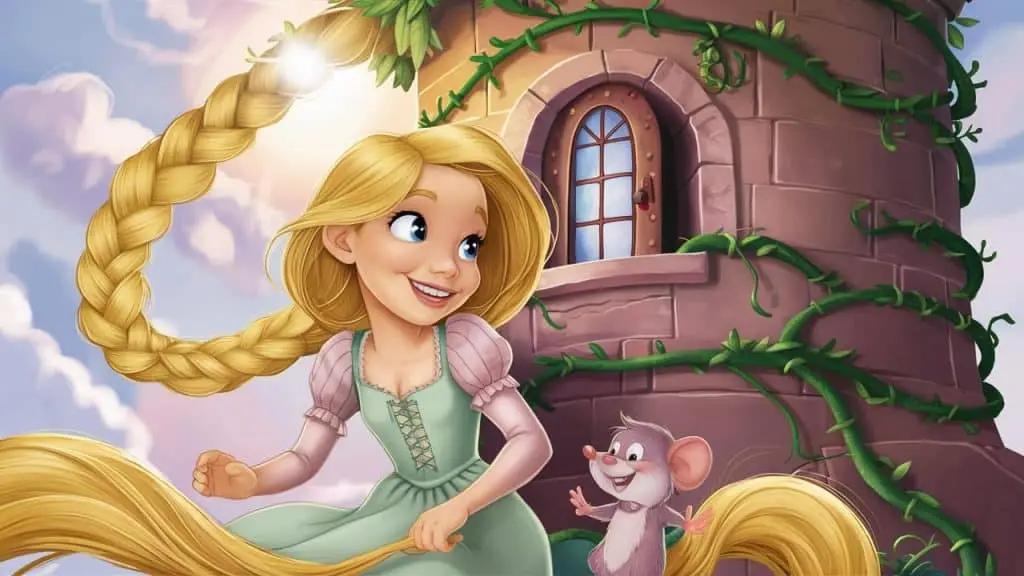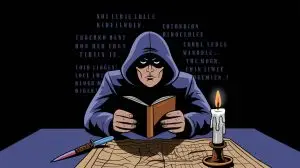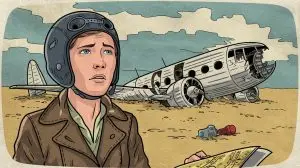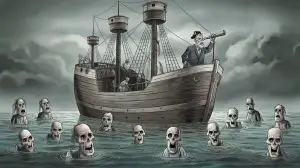Rapunzel Fairy Tale Analysis for Children. Rapunzel is a captivating fairy tale that has fascinated children for generations. In this story, a young girl named Rapunzel is locked away in a tower by a witch named Dame Gothelf.

The story begins with a pregnant woman craving a special herb called rapunzel, which leads to her unborn daughter’s confinement in a tower.
When Rapunzel grows up, her long hair becomes the only way for the witch, and later a prince, to reach her. This magical element keeps children enchanted and sparks their imagination.
As they follow Rapunzel’s journey, children learn about overcoming obstacles and how inner strength can lead to freedom. With themes of bravery and hope, the story of Rapunzel remains a timeless favorite for young readers.
Origins of Rapunzel
The story of Rapunzel has captivated audiences for centuries. Let’s explore its beginnings with the Brothers Grimm and how the tale has evolved over time.
Grimm Brothers and Cultural Impact
The famous tale of Rapunzel was popularized by the Brothers Grimm. Jacob and Wilhelm Grimm were German academics who collected and published folklore. They included Rapunzel in their 1812 anthology, Children’s and Household Tales. Their version is now the most well-known.
Rapunzel’s tale traces back to earlier European stories. The Brothers Grimm added their touch, making the story resonate widely. The enchanted tower, long golden hair, and the evil enchantress are iconic elements known worldwide.
Rapunzel’s narrative explores themes of confinement, resilience, and love—elements that appeal across generations.
The Brothers Grimm also influenced the cultural landscape with their collection. Their tales contributed to preserving German folklore, sparking interest in fairy tales globally. Rapunzel became a symbol of enduring hope and has been retold, adapted, and referenced in countless books, films, and even TV shows.
Evolution of the Fairy Tale
Before the Brothers Grimm, the story of Rapunzel existed in various forms. One of the earliest versions is from 1698, called “Parslinette” by Charlotte-Rose de Caumont de La Force. This version set the foundation for the story we know today.
The tale evolved over the years, reflecting changes in society. Modern versions focus on Rapunzel’s empowerment. In Disney’s Tangled, for instance, Rapunzel is an adventurous, self-reliant character.
This evolution underscores shifting attitudes towards female agency and independence.
These transformations show how a fairy tale can adapt to different times while retaining its core themes. Rapunzel remains relevant by evolving in both content and character portrayal. The fairy tale continues to inspire, demonstrating the timeless appeal of a well-loved story.
Characters and Symbolism

“Rapunzel” is a story rich in characters and symbols. The interactions between Rapunzel and the witch, the prince’s brave efforts, and the tower’s deeper meaning all help to shape this classic fairy tale.
Rapunzel and the Witch
Rapunzel is the main character, known for her long, magical hair. Trapped in a tower, she yearns for freedom. The witch, who locks her away, is a symbol of control and fear. Her jealousy of Rapunzel’s beauty drives the story’s conflict. The witch represents an obstacle that Rapunzel must overcome to find her true self.
Rapunzel’s hair is crucial. It’s her connection to the outside world and the prince. It’s also a symbol of her transformation from a trapped girl to a free woman.
The witch is an antagonist. Her control over Rapunzel is emblematic of the struggles between good and evil, with the sorceress embodying the darker aspects of this battle.
The Prince and His Quest
The prince plays the role of a savior. He hears Rapunzel’s singing and is drawn to her tower. His quest to rescue her represents courage and the fight for love.
When he climbs the tower using Rapunzel’s hair, it’s a symbol of their unique connection.
He faces blindness and banishment, but his love and determination never waver. This perseverance highlights the story’s theme of resilience in the face of adversity.
Rapunzel’s tears healing his blindness symbolize hope and the power of true love.
The Symbolic Meaning of the Tower
The tower is more than just a setting; it’s a powerful symbol. It stands for isolation and confinement but also for protection and growth. Rapunzel’s time in the tower represents her sheltered and restricted life.
As she leaves the tower, it signifies her move from dependence to independence. The tower’s height means separation from the world, emphasizing themes of control and freedom.
Rapunzel’s descent from the tower, thanks to the prince, marks the beginning of her new life.
This approach crafts a vivid picture of the classic tale’s deeper meanings, making it engaging and enlightening for young readers without losing its magical charm.
Motifs and Themes

The fairy tale “Rapunzel” by the Grimm Brothers is rich with symbols and recurring ideas that convey its deeper meanings. Key themes include the enduring power of love, the struggle between freedom and confinement, and the influence of fate and destiny.
Love and Sacrifice
Love is a central theme that drives the plot of “Rapunzel.” Rapunzel’s parents make a great sacrifice, risking their safety for the sake of their child. This sets the stage for Rapunzel’s own journey.
Her relationship with the prince, whom she meets while confined in the tower, shows the lengths to which love can push individuals.
The prince, blinded and desperate, roams the wilderness, symbolizing his sacrifice. Their reunion and Rapunzel’s tears healing his blindness emphasize the redemptive power of love.
This motif underscores the story’s moral that true love can conquer great obstacles.
Freedom vs. Confinement
Freedom and confinement are explored mainly through Rapunzel’s life in the tower.
Locked away from the world, Rapunzel’s long hair becomes a symbol of her imprisonment and a tool for escape when she meets the prince.
The stark contrast between the freedom outside and her isolated confinement inside the tower speaks volumes.
Rapunzel longs to see the world beyond the tower’s walls, representing a universal desire for exploration and adventure. Her eventual escape with the prince signifies breaking free from the chains of oppression and discovering personal freedom.
Fate and Destiny
Fate and destiny play significant roles in shaping the events in “Rapunzel.”
The characters’ lives seem governed by a predestined plan, from Rapunzel being given up to the witch to her meeting with the prince. The witch’s actions and decisions surrounding Rapunzel’s life highlight the inevitability of fate.
However, despite these seemingly predetermined paths, the choices made by Rapunzel and the prince show that destiny can be influenced by individual actions.
The eventual happy ending suggests that fortune favors those who act bravely and with integrity, hinting at a balance between destiny and personal agency.
Plot Structure and Climax

The “Rapunzel” tale, rich with highs and lows, follows a gripping plot structure. This structure is crucial in creating the story’s tension and eventual resolution.
The Building Suspense
In “Rapunzel,” suspense begins with a desperate couple. Unable to have children, they make a deal with a Witch. When their child is born, she is named Rapunzel and given to the Witch. The Witch locks her in a tall tower, with no entrance or stairs.
Rapunzel’s only escape is through her own golden hair, which she lets down for the Witch to climb.
The story heightens when a wandering Prince hears Rapunzel’s singing. Intrigued, he visits the tower and also uses her hair to climb up. They fall in love and plan her escape using silk threads.
Turning Point and Resolution
The climax hits when the Witch discovers the Prince’s visits. In her rage, she cuts Rapunzel’s hair and banishes her to the wilderness.
The Prince, when he returns, is met with Rapunzel’s hair and the Witch’s cruel laughter. In grief, he jumps from the tower, rendering him blind.
Years pass, but the Prince and Rapunzel’s love doesn’t fade. They eventually reunite, and Rapunzel’s tears of joy cure his blindness. They return to his kingdom, where they live happily ever after.
Their journey from despair to joy and love illustrates the power of resilience and hope.
Moral Lessons and Educational Value

Rapunzel’s story provides meaningful lessons on the results of actions and the strength found in courage and perseverance. Kids learn profound principles wrapped in an engaging, magical narrative.
Consequences of Actions
The tale shows how choices have outcomes, demonstrated by Rapunzel’s parents’ decision to steal rampion from the witch’s garden. This act led to Rapunzel being taken and locked in a tower.
Children can recognize that actions, whether small or big, can lead to significant consequences.
For example, the witch’s punishment wasn’t just about the parents but also impacted Rapunzel’s entire life.
Similarly, as Rapunzel meets a prince and they try to escape, their choices lead to both hardships and victories.
Their actions teach children that decisions shape their futures, highlighting the importance of making thoughtful choices.
Importance of Bravery and Hope
Rapunzel’s bravery shines through when she dares to let the prince into her tower. Despite her fear, she hopes for freedom and love. Her courage inspires children to face their fears and hold onto hope.
The prince’s journey also underscores bravery. After being blinded and wandering in the forest, his unwavering hope and love eventually lead him back to Rapunzel.
When the prince reunites with Rapunzel, their tears heal him, symbolizing that hope and love can lead to miraculous outcomes. This teaches kids that sticking through tough times with courage can lead to better, often unexpected, results.
For more insights into “Rapunzel” and its moral teachings, visit the in-depth analysis on Interesting Literature or have a look at the synopsis and themes discussed on Study.com.
Rapunzel in Modern Media
Rapunzel’s story has continued to captivate audiences, finding new life in various adaptations. Let’s dive into a couple of the most notable ones.
Film and Television Adaptations
The story of Rapunzel has made a significant impact in film and television. Disney’s Tangled stands out as a major modern interpretation.
Released in 2010, this animated film reimagines Rapunzel as a spirited young girl with magical, glowing hair. Her charming adventures with Flynn Rider have delighted children and adults alike.
Other notable adaptations include TV shows such as Once Upon a Time.
This series places Rapunzel in a contemporary setting, adding layers of drama and fantasy. These modern takes not only keep the fairy tale alive but also introduce it to new generations.
Adaptations like these reflect the cultural impact of Rapunzel, showing how timeless stories can evolve while retaining their essence.
Rapunzel’s enduring appeal in modern media highlights its significant cultural relevance, continually drawing in children and fans of fairy tales.
Tips for Discussing Rapunzel with Children
Connecting with children about the tale of Rapunzel can spark imagination and help develop empathy. Here are some helpful tips to make the discussion engaging and meaningful.
Encouraging Imagination and Empathy
Use the story of Rapunzel to stimulate your child’s imagination.
Ask questions like, “How do you think Rapunzel felt when she was trapped?” or “What would you do if you had such long hair?”
Engaging children in imaginative scenarios helps them relate to characters and their situations.
Role-playing can also enhance their imagination.
Suggest they act out scenes from the story, taking turns being Rapunzel or the prince. This interactive approach makes the story more vivid and real for them.
Linking this to real-world experiences or their own adventures makes the discussion relatable and fun.
Understanding Complex Emotions
Ask them how they would feel in Rapunzel’s shoes to nurture empathy.
Prompt them to identify emotions like fear, hope, and bravery.
Explore topics like how Rapunzel might have felt isolated in her tower and why empathy towards others is important.
Understanding Complex Emotions
Rapunzel’s story is rich in emotional depth. Discussing complex feelings like loneliness, longing, and freedom can help children understand and articulate their own emotions.
For example, you can explore Rapunzel’s sadness when she’s locked away and her joy when she finally gains her freedom.
Break down these emotions into simple, relatable terms.
Ask them if they ever felt lonely like Rapunzel or happy like when she meets the prince.
Making connections to their own feelings helps them see emotions as a normal part of life.
Use illustrations from the story to show facial expressions and body language.
Visual aids help children connect words to feelings.
Discuss how actions like the witch’s manipulation can affect emotions and why understanding others’ feelings is crucial.
Final Thoughts
Understanding the tale of Rapunzel offers a treasure trove of learning and fun for children.
The morals in Rapunzel teach kids about the power of love, bravery, and freedom. These are big ideas that make stories interesting and help children grow.
Rapunzel‘s cultural impact stretches far and wide. From the classic story by the Brothers Grimm to modern adaptations like Disney’s Tangled, the story remains popular across generations.
It’s amazing to see how a young girl’s adventure can be so inspiring. The fairy tale of Rapunzel encourages children to be resilient and keep hope alive, no matter how tough things get.
The story also integrates symbolism, such as Rapunzel‘s long hair, to highlight themes of connection and independence. Each element serves its purpose, making the tale engaging and thought-provoking.
For children, Rapunzel is more than just a story. It’s a beautiful mix of adventure, magic, and important lessons that remain relevant throughout their lives.
Steve is the creative force behind Unique Tales, a blog dedicated to sharing captivating stories that explore the human experience in all its complexity. With a passion for writing and a talent for crafting engaging narratives, Steve's blog is a treasure trove of imaginative tales that transport readers to other worlds and challenge them to see things from new perspectives. From epic adventures to intimate character studies, Steve's stories are always thought-provoking and emotionally resonant. With a growing following of readers who appreciate his unique voice and creative vision, Steve is quickly becoming a rising star in the world of online storytelling.






